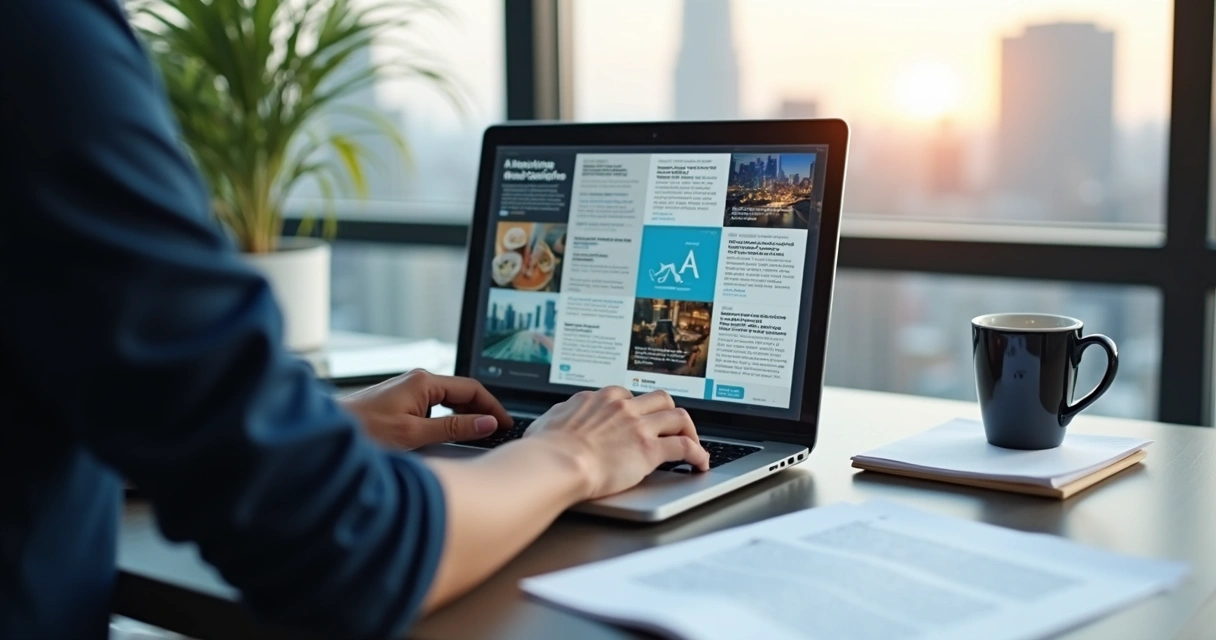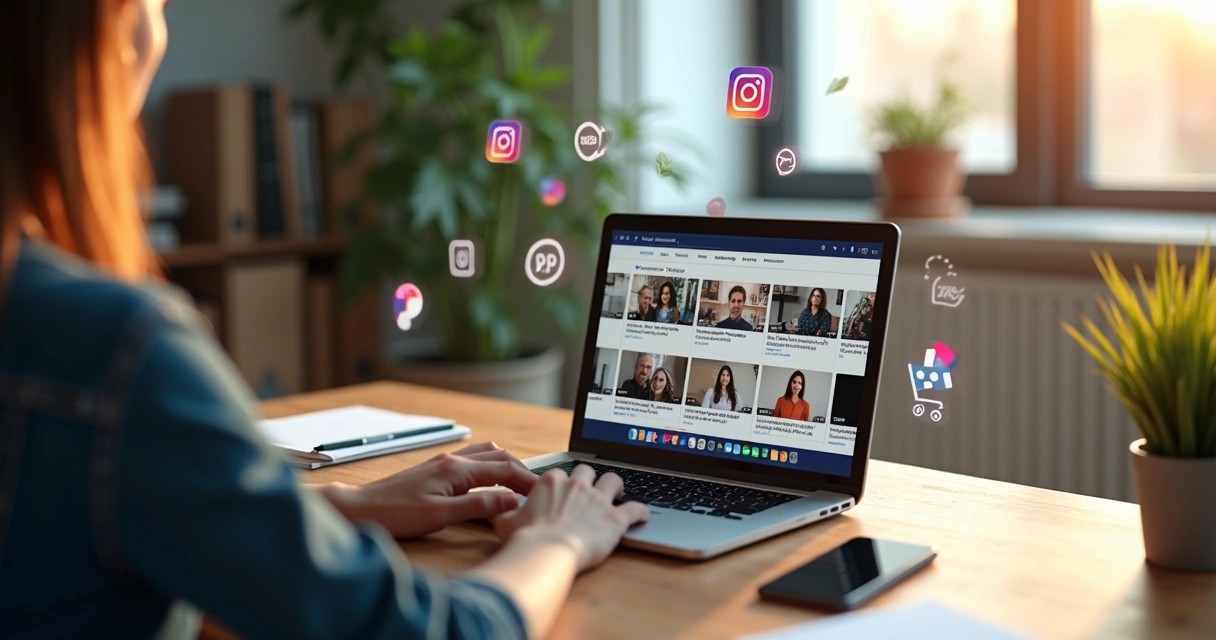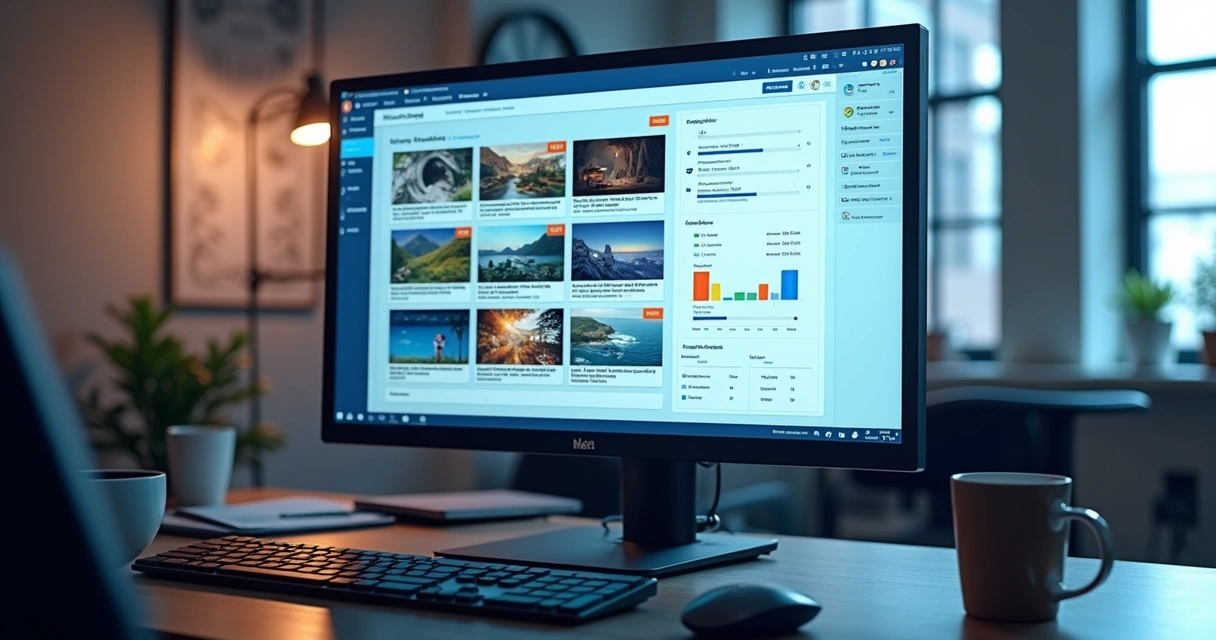If you’re managing ads—even just a few—testing is a must. When you step into the world of social media, ad performance can change quickly. One headline might perform better today, another image might do better tomorrow. Testing is necessary, but manual A/B testing? That eats up time, money, and, if I’m honest, energy.
Imagine having more variations than you can possibly create by hand. That’s where artificial intelligence walks in. It’s not magic, but sometimes it does feel like it.
The heart of A/B testing for ads
Let’s start small. A/B testing is the practice of showing two or more ad versions to your audience to see which does better. One may have different copy, a new image, or a shifted call-to-action button color.
Honestly, most marketers don’t test enough variations. Not because they don’t want to, but because creating, launching, and monitoring each version adds up.
Whatever can be automated, probably should be.
Why AI fits A/B testing like a glove
AI doesn’t get tired or distracted. It can write dozens of headlines or generate fresh images in an instant. That’s exactly the space Automads works in – making it possible for teams to churn out creative variations in seconds, not days.
Let’s look at what using AI for A/B testing means, especially if you want to move fast, save money and stay on brand.

- Scale: AI can create, test, and learn from hundreds of ad combinations, which just isn’t possible for a human team alone.
- Speed: Instead of days to produce variations, it’s minutes or seconds. If a creative isn’t working, you pivot—without the wait.
- Consistency: AI keeps your visual and textual message aligned to your brand’s guidelines, regardless of the number of variations.
- Lower cost: Cutting out the endless cycle of design revisions and manual edits keeps more money in your ad budget.
Step-by-step to automate your A/B ads with AI
Set goals (before the tech)
This part is a little boring, yes. But before you unleash AI, it pays to clarify what you want. Do you want more click-throughs, lower cost per lead, or better engagement?
Choose one. Maybe two. But if you try to optimize for everything at once, you’ll struggle to know what “winning” even looks like.
Create ad variants… instantly
Now comes the fun part. Platforms like Automads allow you to generate ad copy, images, and even full videos with AI actors automatically. With tools such as the AI Facebook ad generator and AI Meta ads generator, you can produce unique variants for each campaign objective or target audience. No manual tweaks. No scattered files.
Automate deployment into platforms
Many AI-driven solutions integrate directly into ad management platforms. That means you don’t need to download and re-upload every new version—one less headache. This link between creative generation and delivery closes the loop, letting you launch continuous tests hands-off, while staying in control.
Let the AI monitor results
Here’s where it gets interesting. The AI not only creates, but also tracks which versions are working. When a text or image variation starts falling behind, the system knows it’s time for a swap. Some platforms can even predict what will do better, so future versions keep improving.
The study on reinforcement learning with generative ad text found that AI-generated ad texts trained this way achieved a 6.7% higher click-through rate (CTR) across a massive test group, just by letting the AI fine-tune messaging in real time. That’s a big bump when you’re burning ad spend on every impression.
Optimize, repeat, and scale up
I wish I could say it’s all hands-off after this, but you should keep an eye on the patterns. Which ad features win out? Which fall flat? The cool thing is, the more you use AI testing, the smarter your next batch will be. It learns what your brand, audience, and market responds to.
With tools like the AI ad images generator and AI ad video generator, you can scale complex creative testing without relying on designers or editors every step of the way.
Automate what you can, monitor what matters, and let AI do the heavy lifting.
The real-world impact, numbers and all
If you’re skeptical, that’s fair. Humans have been promised the world by technology before—sometimes with less than stunning results. Yet, research continues to confirm AI’s value in the ad testing world. For example, the reinforcement learning study on Facebook ad text proved that using AI not only matches but surpasses traditional iterative testing, with sharper gains in user engagement and more effective targeting over time.
And from my own experience (and maybe this is a little bias), teams using AI creative generation spend less time stress-testing every single headline, and see stronger, faster feedback loops.
Keeping your brand consistent
One worry people have is about brand “drift.” If you let machines write your copy and design your images, does it still sound and look like you?
That’s actually one of the better surprises about AI-driven platforms, like Automads. They’re trained to respect your brand rules. You give them guidelines—tone, colors, forbidden phrases, logo use—and they stick to it.
And, if you ever feel uncertain, you always have the final review and can quickly regenerate anything that doesn’t feel right. It’s your campaign, with backup from a very fast, tireless assistant.
AI fits every stage of campaign testing
When campaigns get big, a few best practices help keep your tests meaningful:
- Test one variable at a time: Headline, image, or call to action. Not all at once.
- Let tests run long enough to get statistical confidence (not just a few hours).
- Feed learnings from previous tests into the next wave. What wins today might change as your audience shifts.
- Be open to surprises. Sometimes the variant you thought was “weird” knocks it out of the park.
- Use AI tools to stay ahead of creative fatigue. Audiences get bored, quickly.
AI doesn’t guarantee a perfect ad every time. But it does make it easier to find what works, get there faster, and improve on the fly.

Going from learning to action
Automating your A/B testing with AI isn’t some far-off dream—it’s accessible, effective, and increasingly the standard for marketers who want to stay responsive and creative. Automads was built for this shift. By bringing together instant ad generation, direct testing, and smart optimization, you can focus less on repetitive manual work and more on what your strategy needs.
Ready to see for yourself? Start a test in Automads and see how creative, fast, and stress-free A/B experimentation can become.
Frequently asked questions
What is A/B testing in ads?
A/B testing in ads is the process of running two or more versions of an advertisement to a similar audience to directly compare their performance. Each version changes just one element, such as headline, image, or call-to-action, to find out which combination drives better results, like more clicks or conversions.
How does AI automate A/B testing?
AI automates A/B testing by generating creative variations, deploying them to advertising platforms, and continuously monitoring performance. The AI analyzes results in real-time, identifies top-performing ads, and can adapt future versions based on data, reducing manual intervention and speeding up the learning cycle.
Is AI A/B testing worth it?
Yes, AI-powered A/B testing is often seen as valuable because it increases the number of variations you can test, speeds up the feedback loop, and can uncover winning ads that manual testing might miss. Research, such as studies on reinforcement learning in ad text creation, shows measurable improvements like higher click-through rates when AI is used.
What tools automate A/B tests with AI?
Many platforms now provide AI-driven A/B testing for ads. Automads, for example, offers solutions for Facebook, Meta, Google, and other networks through its tools like the AI Facebook ad generator and AI Google ad generator. These tools allow rapid creation, deployment, and refinement of ad creatives without manual oversight.
How much does AI A/B testing cost?
The cost of AI A/B testing varies. Some platforms, like Automads, allow users to test and create ad variations even without requiring upfront payment or a credit card. Typically, costs scale according to the number of creatives, level of automation, and extra features like video or brand customization. For most teams, automating tests results in overall savings compared to manual creative production and campaign management.





